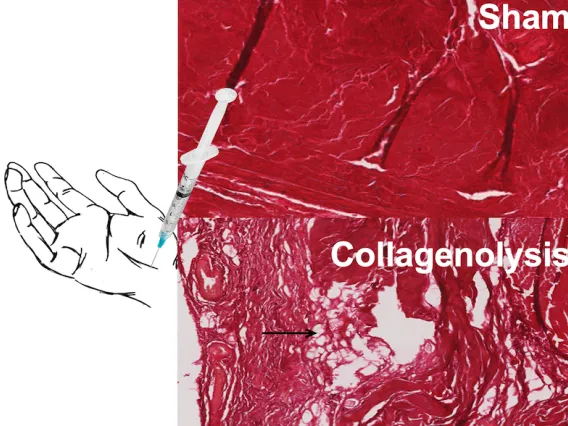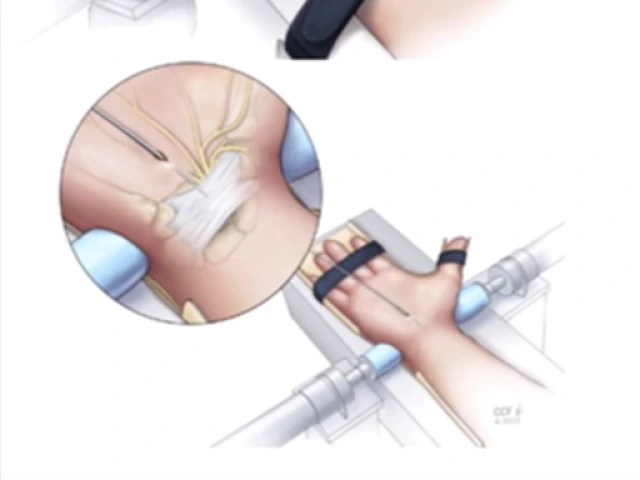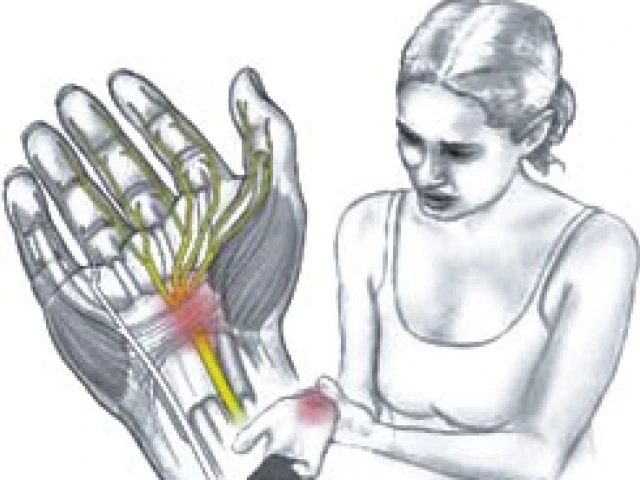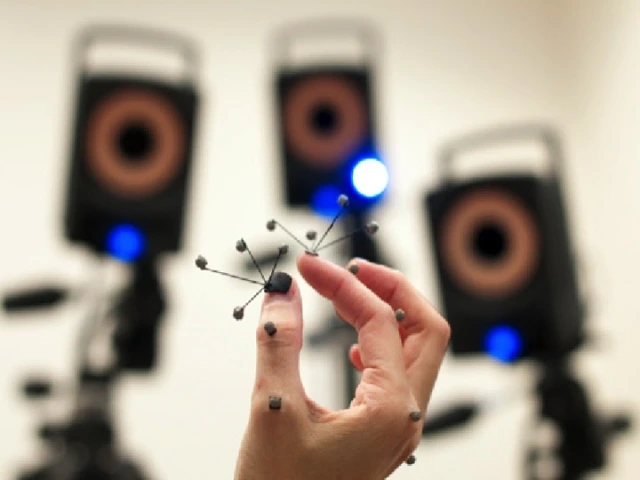
Collagenolysis of the Transverse Carpal Ligament
During carpal tunnel release surgery, the transverse carpal ligament (TCL) is transected to decompress the median nerve. However, transecting the TCL reduces grip strength, causes pillar pain, results in greater carpal bone motion, and may damage the surrounding nerves, vessels or tendons.
We aim at developing a novel non-operative treatment for carpal tunnel syndrome by enzymatically degrading the TCL. The objective is to inject collagenase into the TCL and evaluate its enzymatic effect on TCL morphology and mechanics using state-of-the-art robotic and ultrasound technologies.
Our hypothesis is that collagenase effectively degrades the TCL, leading to decreased TCL thickness and stiffness in vitro as well as increased TCL length and arch area in situ. The knowledge obtained from this project will guide future in situ carpal tunnel studies, in vivo animal studies, and clinical trials, tapping into the potential of collagenase injection as a novel non-operative treatment for CTS.
Sponsored by NIH R21AR075402

Biomechanical Treatment of Carpal Tunnel Syndrome
Carpal tunnel syndrome (CTS) is a prevalent hand disorder caused by compression of the median nerve at the wrist. It has an immense impact on national health care, worker productivity, and quality of life.
CTS is commonly treated by a surgery that transects the transverse carpal ligament to decompress the median nerve. Our search for a non-surgical CTS treatment alternative has resulted in a novel mechanism of median nerve decompression by applying transverse compression to the wrist to reshape and enlarge the tunnel space.
In this project, we design and develop a strategy of carpal tunnel manipulation that achieves treatment efficacy for CTS. Our central hypothesis is that our approach of biomechanical manipulation increases carpal tunnel area, thereby decompressing the median nerve and alleviating CTS symptoms.
This project combines basic science and clinical translation, elucidating the underlying morphological and physiological mechanisms of the biomechanical intervention for a systematic and rigorous development of an evidence-based strategy for CTS treatment.
Sponsored by NIH R01AR068278

Hand Sensorimotor Function
Hand sensorimotor function is sensitive to peripheral median neuropathy causing the associated functional deficit. We investigate hand function with quantifiable sensorimotor data from novel biomechanical and neurophysiological studies.
For example, we examine CTS-induced pathokinematic and pathokinetic performance using dexterous manual tasks of thumb opposition, reach-to-pinch, precision grip, and finger pressing.
We also investigate the neurophysiological implications of chronic peripheral neuropathy (i.e., CTS) on the central nervous system by evaluating corticomuscular coupling, stretch reflex, choice reaction time, and functional imaging of the motor and sensory cortices.
Our research elucidates the pathological mechanisms and behavioral manifestations of CTS and aid in the development of new strategies for diagnosis, evaluation, rehabilitation, and treatment of this disorder. More generally, CTS as a chronic neuropathy serves as an effective model to study sensorimotor mechanisms of the peripheral and central nervous systems. In addition, the methodology developed is applicable to other neuromuscular disorders.
Sponsored by NIH R01AR056964
Thumb Carpometacarpal Joint Arthritis
Thumb carpometacarpal joint arthritis is a degenerative condition that effects predominantly older population and females.
The pain related to this arthritic condition can be incapacitating and interfere with a patient’s daily life.
We study the carpometacarpal joint mechanics under traction and compressive loading using cadaveric experiment and human testing.
Internal Funding
Thumb Kinematics and Its Implication to Carpal Tunnel Syndrome
The purpose of this project is to apply rigorous and innovative engineering methods to the study of hand functions.
We have developed methodology to examine three-dimensional thumb kinematics. A motion analysis system will be used to obtain the angular motion of seven degrees of freedom of the carpometacarpal, metacarpophalangeal, and interphalangeal joints.
In addition to the examination of the aberrant thumb kinematics associated with CTS, we also design a cadaveric study to elucidate the biomechanical role of each thumb muscles for the purpose of understanding the underlying mechanisms of the observed aberrations in CTS subjects.
Sponsored by Orthopaedic Research and Education Foundation (OREF)
Biomechanical Evaluation of Hand Motor Function
Assessment of motor function is an important aspect of the physical examination of the hand. However, existing tests of hand motor function are non-specific, semiquantitative, or subjective. These tests often lack the sensitivity needed to detect subtle but meaningful changes in deterioration of function.
More quantitative, sensitive and discriminative methods are needed to detect changes in motor function resulting from pathological conditions, disease progression, rehabilitation, or treatment.
The objective of this study is to improve biomechanical evaluation of hand motor function to help provide new strategies for effective diagnosis of CTS and follow-up after treatment.
Sponsored by Aircast Foundation
Exploration of Carpal Tunnel Mechanics for CTS Treatment
This is an exploratory project to test the hypothesis that that strategically applied compression on the wrist can increase carpal tunnel cross-sectional area and decrease carpal tunnel pressure, thus relieving the median nerve from mechanical insult.
We tested this hypothesis by systematically investigating the biomechanical relationships among transverse compressive force, carpal tunnel pressure, carpal arch width, and carpal tunnel cross-sectional area using cadaveric specimens and human subjects.
The implementation of this project will yield novel knowledge on carpal tunnel mechanics and pathomechanics, leading to an evidence-based, novel biomechanical treatment strategy for CTS.
Sponsored by NIH R21AR062753
ARFI and B-mode Ultrasound Imaging for Transverse Carpal Ligament Pathomechanics
The prevalence of carpal tunnel syndrome is particularly high in occupations that involve repetitive hand use. Among the etiological factors of CTS, biomechanical risks are well recognized for occupation-related carpal tunnel syndrome.
In this project, we investigate the biomechanical interactions between the TCL with the thenar muscles and the flexor tendons, and pathomorphological and pathomechanical properties of the TCL in professional pianists as an example of people who experience repetitive hand use.
Our understanding of novel pathogenic mechanisms of occupational carpal tunnel syndrome leads to improved management of this hand disorder in terms of its prevention, diagnosis, evaluation, and intervention.
Sponsored by NIH R21AR064957
Biomechanical Properties of the Transverse Carpal Ligament
Carpal tunnel syndrome (CTS) is a prevalent hand disorder caused by compression of the median nerve at the wrist. It has an immense impact on national health care, worker productivity, and quality of life.
CTS is commonly treated by a surgery that transects the transverse carpal ligament to decompress the median nerve. Our search for a non-surgical CTS treatment alternative has resulted in a novel mechanism of median nerve decompression by applying transverse compression to the wrist to reshape and enlarge the tunnel space. In this project, we design and develop a strategy of carpal tunnel manipulation that achieves treatment efficacy for CTS.
Our central hypothesis is that our approach of biomechanical manipulation increases carpal tunnel area, thereby decompressing the median nerve and alleviating CTS symptoms.
This project combines basic science and clinical translation, elucidating the underlying morphological and physiological mechanisms of the biomechanical intervention for a systematic and rigorous development of an evidence-based strategy for CTS treatment.
Sponsored by NIH R03AR054510

Finger coordination
The fingers of the human hand are used extensively during daily activities. The execution of many manual tasks depends on the application of well-coordinated finger forces.
We develop experimental methods and analytical models to study finger coordination during various manual tasks, such as pressing, holding and gripping as well as examine how finger coordination is affected by CTS using the developed experimental methods and analytical models.
Our research help elucidate of the biomechanics and motor control mechanisms of the human hand and human motor control in general, and shed new light on the pathological mechanisms of CTS.

